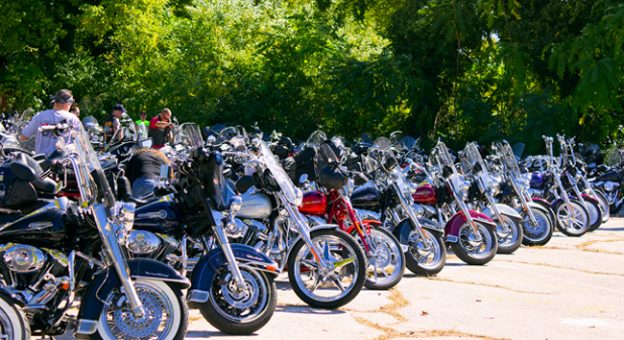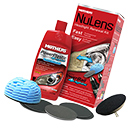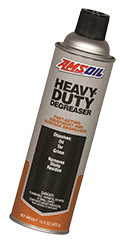
Did your heart sink as you watched the snow melt and realized you hadn’t winterized your motorcycle? These DIY motorcycle tips can get your bike ready for spring and get you on the road for a smooth highway cruise.
1. Check for Small Animals and Debris
If you haven’t covered your bike thoroughly for the winter, you may be surprised to find that a small animal has taken up residence in your exhaust or air intake system. Examine these areas before starting your bike, and send any critters on their way.
2. Drain the Gas Tank
If the gas tank still contains old, untreated fuel, your motorcycle probably won’t start. Drain the fuel tank and examine the fuel. If brown grit comes with the fuel, it’s a sign the inside of your fuel tank has rusted. Flush your fuel tank with acid remover to prevent problems with your fuel system and ensure clean-burning fuel.
3. Treat Gasoline with Fuel Stabilizer
Even after draining the fuel system, there’s a chance that stale gas and ethanol are left in the gas tank. Stale gas and ethanol can cause engine misfiring or problems beyond simple DIY motorcycle repair. Adding fuel stabilizer to the tank clears any unwanted leftovers, plus helps the fuel system stay healthy.
4. Change the Oil
Even though you may have changed the oil and filter before you stored your bike for the winter, experts advise to do so again before your first ride of the new motorcycle season. The oil may have condensation build up from the winter and lack of use. At the very least, check the oil level before riding.
5. Check All Fluids
Gasoline is only one motorcycle fluid you should check when reviving your bike in the spring. Check hydraulic and brake fluid levels as well. Make sure any fluids left sitting in the reservoirs over winter didn’t deteriorate. Examine fluid colors and consistencies. Replace fluids that look dirty or different from when new.
6. Inspect Battery
If a motorcycle battery was left on your bike over winter, you will need to either charge it or replace it. First, pull it out and charge it overnight. Secondly, if you don’t have a maintenance-free battery, check fluid levels in each cell at this time. Use distilled water to fill the cells that are below the recommended level, not mineral-rich tap water. Distilled water keeps the combination of sulfuric acid and water as it should be without introducing minerals.
Once your battery is charged, test it. If it isn’t holding a charge, replace it now, especially if it’s over four years old. Replacing an old battery can prevent unforeseen problems such as being stranded or acid leaks.
7. Check Electrical System
There’s nothing worse than thinking you have enough gas for a longer ride, and then find out the hard way that your gauge malfunctioned. Examine all gauges, switches, head lights, rear brake lights, the horn, and turn signals before hitting the road.
8. Brighten the Headlights
If your bike’s headlight lenses seem foggy, and visibility is limited, it’s time for some polishing. You can buy a headlight cleaner kit for around $20, and clean the headlight yourself. Many motorcycle accidents occur because car and truck drivers claimed to not even see the motorcycle. Prevent unsafe riding by making sure your bike’s lights are at their brightest.
9. Examine the Controls
Test your steering, throttle, and clutch to make sure they still work. Examine cables for frays, corrosion, or damage to coverings. Inspect lines and hoses for cracks, cuts, or signs of leaks. Control cables or hoses should not be folded or kinked, and steering should move freely. If this is not the case for your motorcycle, consider bringing your bike to a trusted mechanic to fix issues with controls.
10. Clean and Lubricate Chain (If Bike Doesn’t Have Drive Belt)
A dirty chain will inhibit how a bike runs. For this DIY motorcycle fix, buy a wire brush and dip it in degreaser. Slide the brush along the chain until it’s completely free of debris and mud. Then, rinse with fresh degreaser and wipe dry with a rag or sponge. Finish by spraying the sprocket side with lubricant. Also check for slack in the chain and adjust to manufacturer’s specification.
11. Check Brake Pads and Levers
Check your brakes before you ride to make sure your first ride of the summer isn’t your only ride of the summer. Brake pads should be at the very least 1/8 inch thick, preferably more. If brake pads are thinner or broken—replace immediately.
Test the position of your brake lever as well to make sure nothing shifted while in storage. Sit on your bike, grasp the handlebar ends, and place your fingers over the brake lever. If the lever touches slightly behind your fingers’ first knuckles from your fingernails and does not engage brakes, you’re in luck. No adjustments are needed.
If the brake lever feels far away, use the lever span adjustment knob to move the levers to the correct position for you.

12. Measure Tire Air Pressure
Check all tires to make sure the pounds per square inch (PSI) are at the recommended level. It’s natural for tire pressure to decrease during winter, but if your tire pressure is below the recommended level, inflate tires to proper level to ensure safe and smooth riding. Check also for any damage such as cracks, worn tread, punctures, or bulges. If you find damage, replace the offending tire before riding.
13. Let the Engine Run
Allow the engine to run for a few minutes and listen for strange noises. Doing so ensures the motorcycle can stay running. You don’t want to have your engine stall and fail miles from home!
14. Inspect the Spark Plugs
Check the gaps in the spark plugs for proper spacing. Check your owner’s manual for the manufacturer’s specifications and adjust. Replace worn plugs as needed.
15. Check for Loose Bolts
Once you’re sure your motorcycle can stay running, check all bolts on your bike to guarantee everything is tightened properly. Take the bike for a short test ride, and feel for abnormal vibrations. Once you’re back from the ride, check all bolts again to make sure nothing came loose. If all bolts and parts are in place, but you’re feeling a rumbling or unusual vibration, there might be a bigger issue such as:
- Motor mounts
- Swingarm
- Axle
- Steering head fasteners
- Wheel balance
- Suspension
These issues can be dangerous and most likely require a visit to a trusted mechanic. They should be fixed before riding.
Apply these DIY Motorcycle Tips on Your Next Project from Rawhide
If, after many attempts, your motorcycle still won’t start, there’s another option. Rawhide Boys Ranch has a collection of donated motorcycles up for auction on our eBay store. Each cycle includes a detailed inspection report for your peace of mind. See if your dream motorcycle project is there.
Every donated item helps fund programs for at-risk youth and families. We hope these DIY motorcycle tips have been helpful.







